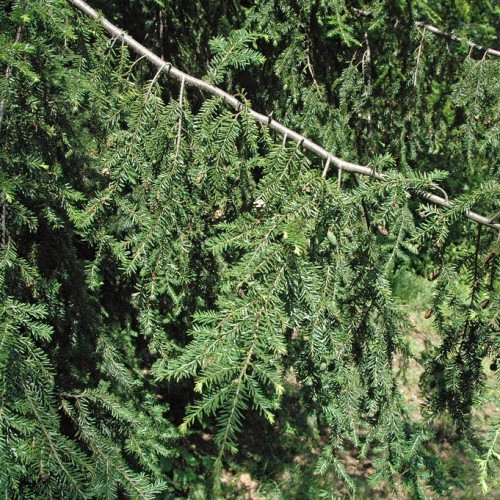
Canadian hemlock
Tsuga canadensis 'Brandley'
Also Known As - eastern hemlockCycle:
Perennial
Watering:
Average
Hardiness Zone:
3 - 7
Flowers:
Flowers In Spring
Sun:
Deep shade, Filtered shade, Full sun only if soil kept moist, Part sun/part shade
Soil:
Sandy Loamy Clay
Cones:
Yes
Leaf:
Yes
Growth Rate:
Moderate
Maintenance:
Low
Care Level:
Medium
watering
Canadian hemlock should be watered approximately once a week, depending on the season and the general environment of the plant. In the spring and summer, when the weather is warm and the sunlight is plentiful, the soil around the plant should be kept slightly moist. During fall and winter, the soil should be allowed to become mostly dry before watering. Never allow the soil to become soggy as this can lead to root rot. Always check the soil before watering to determine if the plant needs water. A good rule of thumb is to water the hemlock until the soil is evenly moist.
sunlight
Canadian hemlock (Tsuga canadensis 'Bradley') grows best in bright, indirect sunlight. This means that the area should receive indirect, filtered light for much of the day, although some direct sun in the morning, or during the late afternoon, is beneficial. In general, 4-5 hours of bright, indirect light per day is recommended. Canadian hemlock will tolerate more intense light in the early morning or late afternoon, as long as this bright light does not come too close to midday.
pruning
Canadian hemlock should be pruned in late winter or early spring, before new growth begins. If it's a young tree or shrub, light shearing is recommended to maintain its desired shape, removing up to 1-third of the plant's growth. For more mature plants, no more than 1-fourth of its growth should be removed at a time, as this might potentially compromise its health. Dead, diseased, and damaged branches can be pruned out at any time throughout the year.
